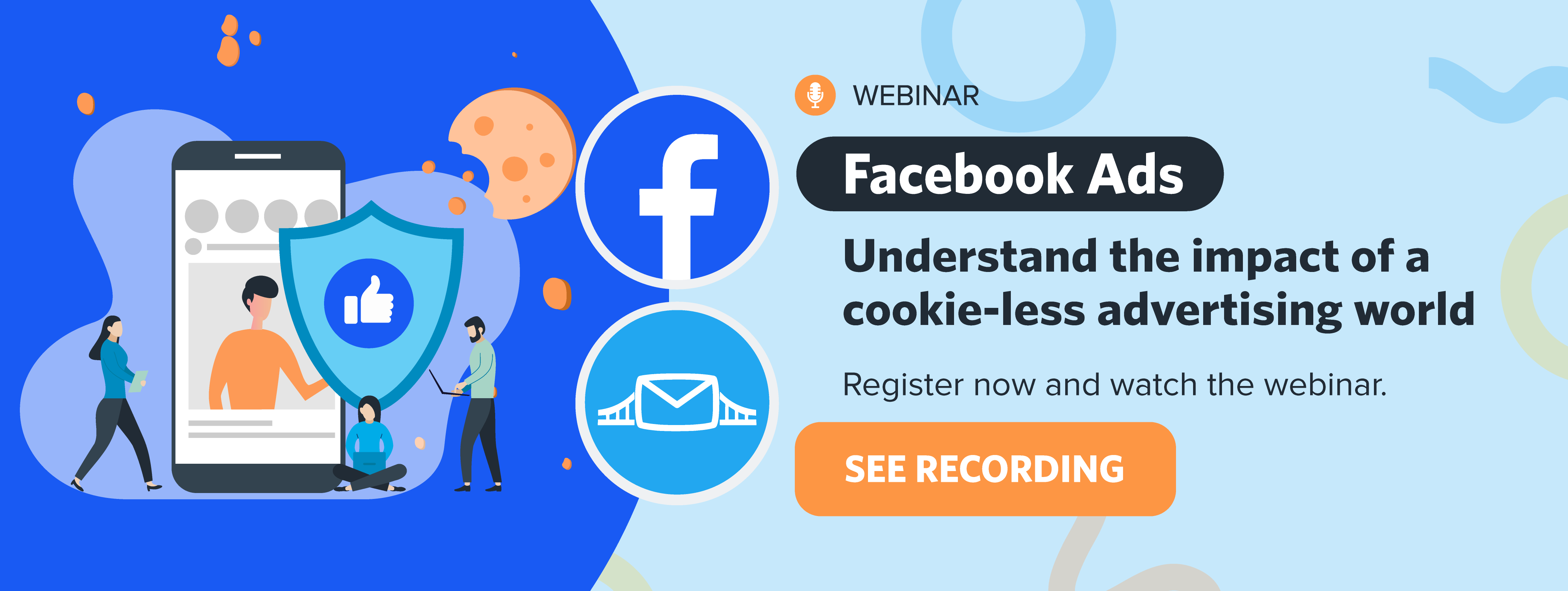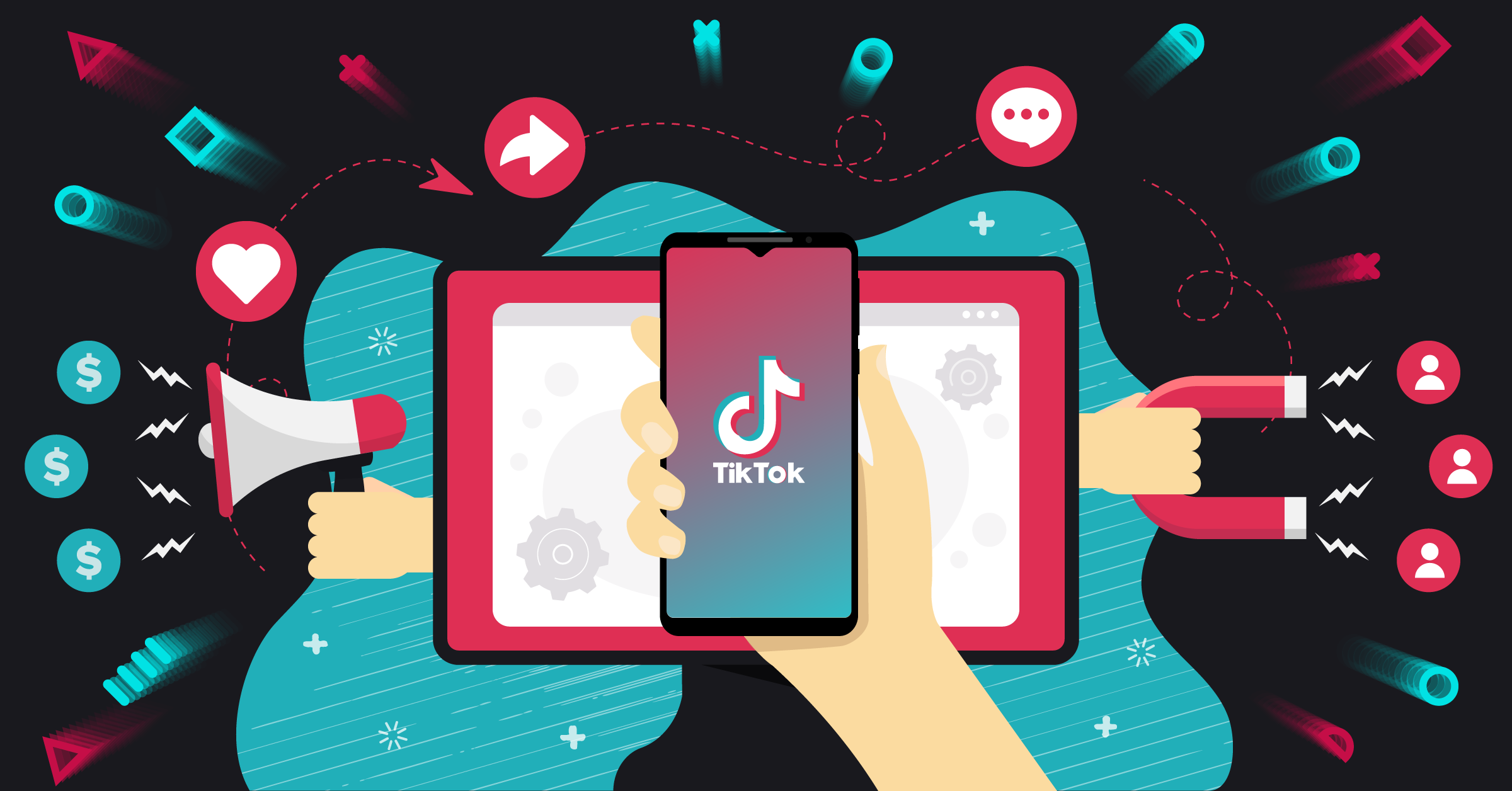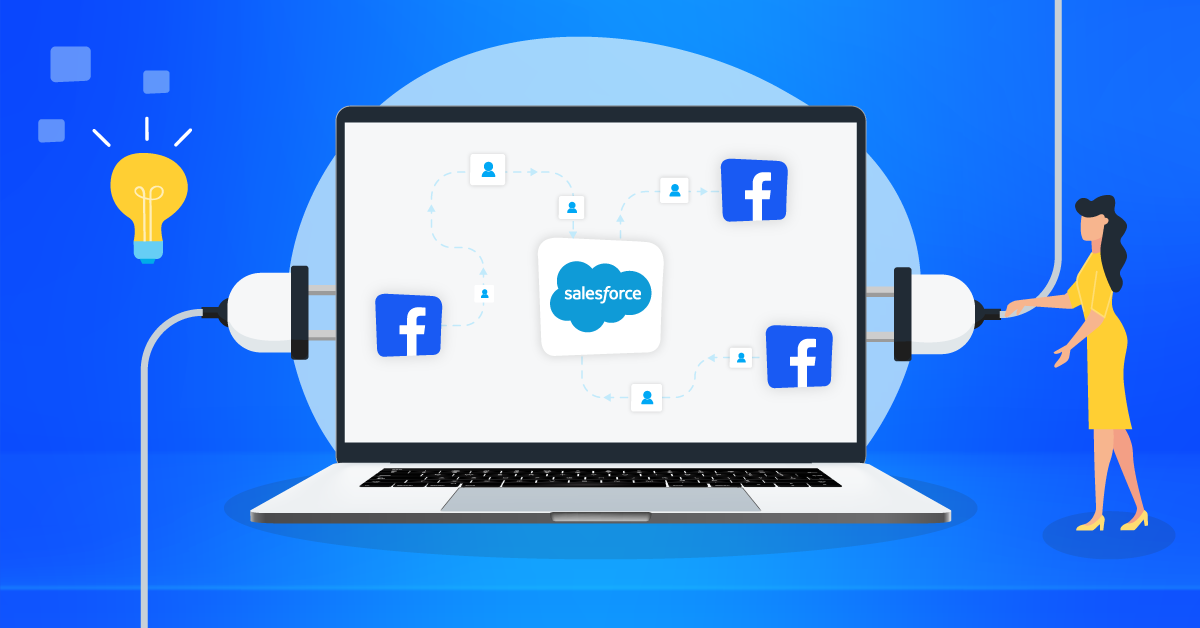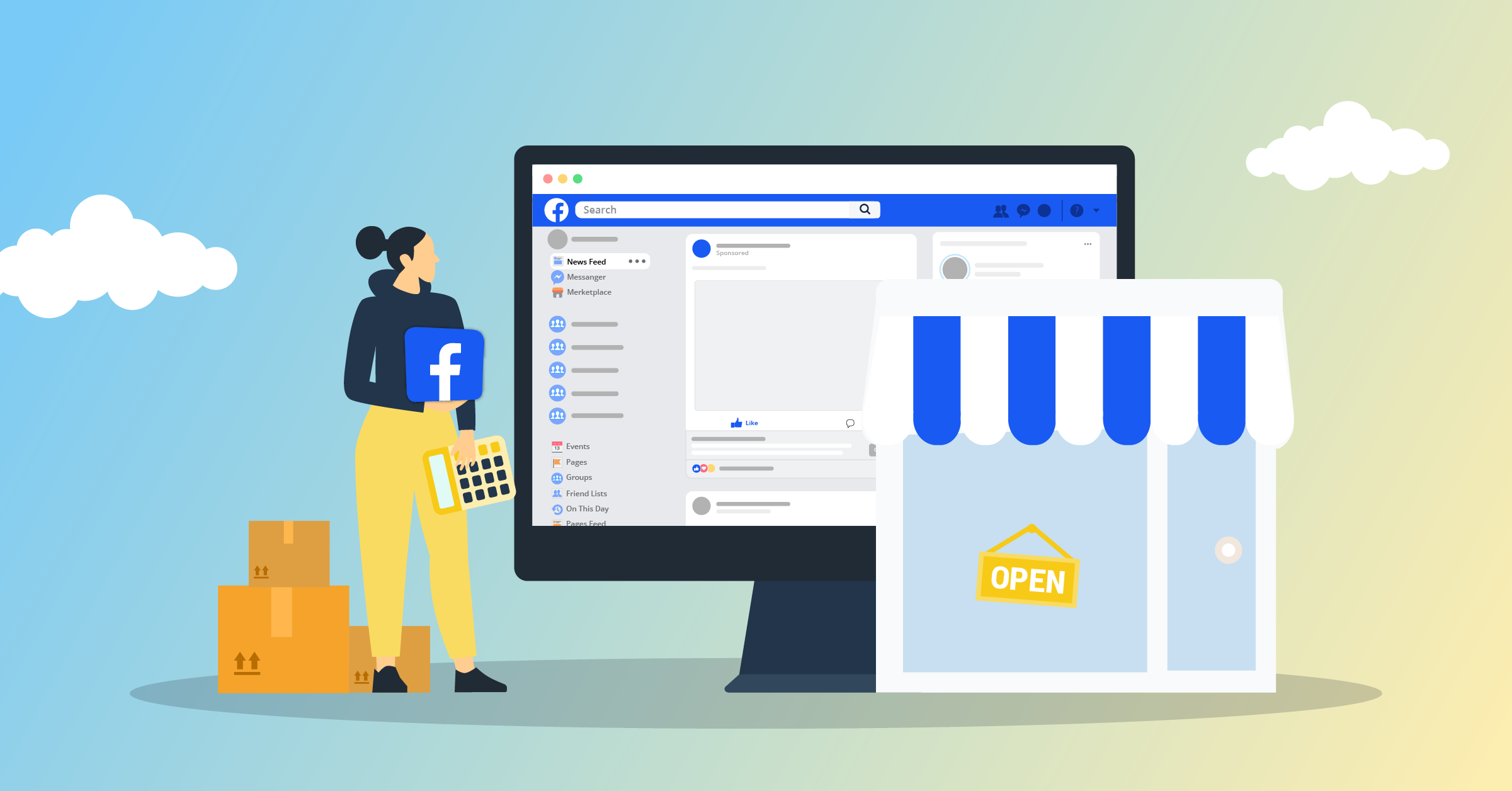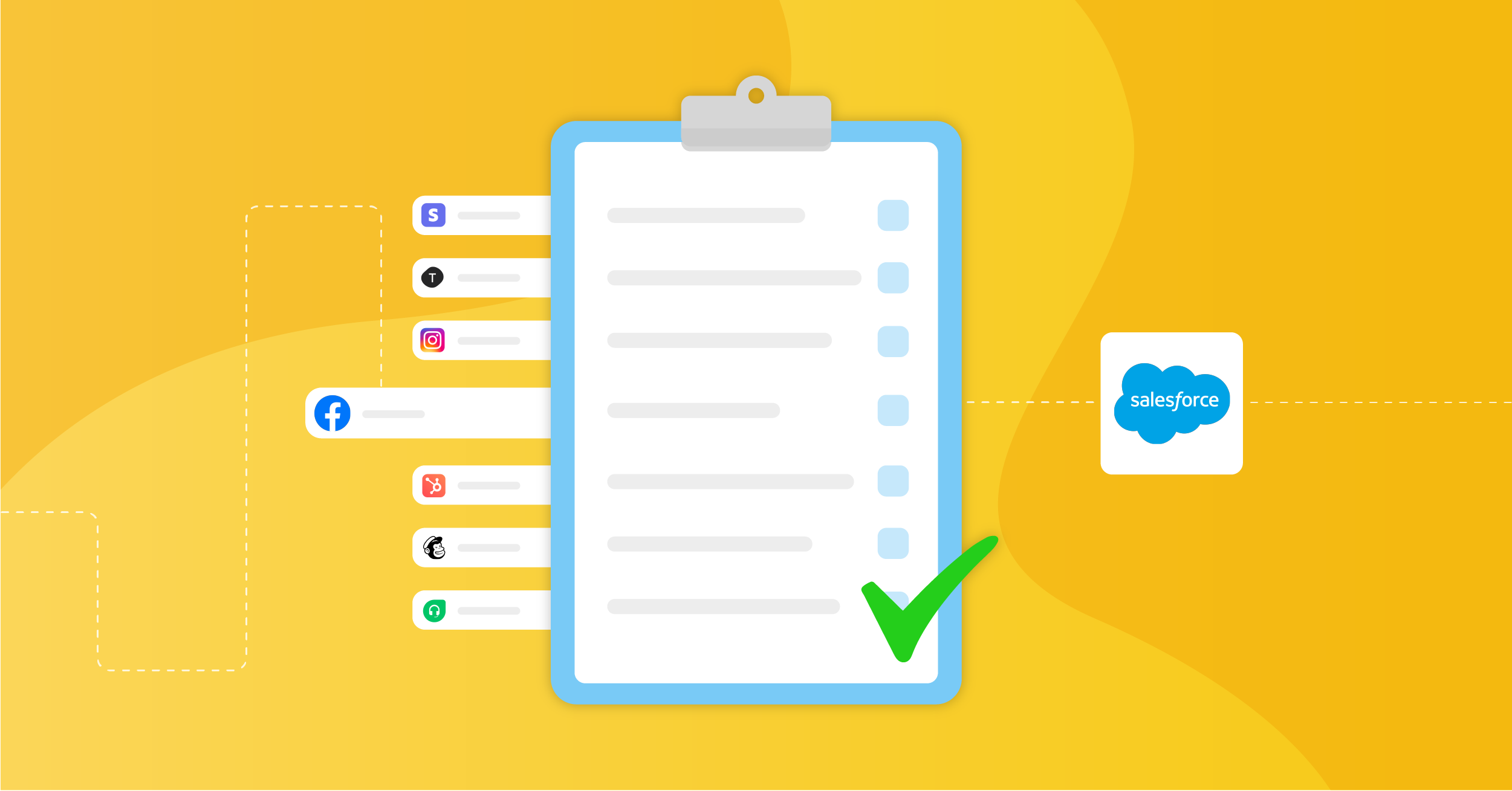
Most businesses generate lots of leads, but only a small percentage of these leads convert to customers. A study revealed that 25% of leads are legitimate and should advance to sales, but 79% of marketing leads never convert into sales. One cause of this is the inability to qualify leads appropriately. Unfortunately, few businesses engage in lead qualification. A study revealed that nearly two-thirds of companies in the business-to-business market fail to consider lead qualification when deciding where to target their sales effort, even though roughly one-quarter of sales leads are qualified. But having a proper lead qualification system will help to prevent this pitfall.
In this guide, you will learn all about lead qualification, its processes, tools, and strategies with examples. This information will help you to effortlessly qualify leads and thus save time and money you would have spent on non-qualified leads.
What is lead qualification?
MyCustomer defined lead qualification as the “process of categorizing a qualified sales or marketing lead as a customer who has been contacted and has engaged with your sales and marketing team, and so is further along the sales process than other leads.“
All leads are different. Leads can be hot, warm, or cold, depending on the stages they are in the sales funnel. The hot leads are those who have shown interest in your product or service and are ready to convert. The warm leads are interested but may need a little push to help them make purchase decisions. The cold leads are not really interested, but with nurturing, they may become warm and even hot.
Qualifying your leads helps you to determine the level of your lead’s interest in your product and service. You will know where they belong in the sales cycle and whether or not to nurture them. This helps to increase the opportunities to close more deals.
Why is lead qualification important?
1. It is a time, energy, and money saver
Not all the leads that come in will be your ideal customer. Instead of concentrating on every lead that comes in, qualifying leads help you create a process that helps to filter the leads. A buyer persona of your customer is useful here. It shows your ideal customers attributes such as the industry, company size, location, and income. This helps you to identify them as they come in. Buyer personas help to improve your value proposition, produce high lead conversions, and help to build better relationships with buyers.
A study showed that 71% of companies that exceed lead generation and revenue goals have documented buyer personas.
Below is an example of one of the B2B buyer persona from Buffer.

The buyer persona shows a facility manager, Fred. It describes Fred, his personal background, company information, role, goals and challenges and, shopping and industry news preferences.
Therefore, creating a buyer persona for your business helps to filter the leads that come in. As you use the lead qualification process, you can determine the leads that are ready and those that need nurturing. This process helps to save time, energy, and money because you will only focus on leads that have potentials for your business.
2. It helps you to personalize messages
One important aspect of qualifying your leads is the lead nurturing process. This involves following up with leads through emails, text, and phone calls. Personalization is an important aspect of lead nurturing. It ensures that you send relevant messages to your leads according to their stages in the sales funnel. A study revealed that 80% of people are more inclined to purchase from a company that provides tailored experiences. Another study carried out Optinmonster revealed that:
- 48% of consumers spend more when their experience is personalized
- 90% of marketers believe personalization is the future
- 74% of consumers get frustrated when content has nothing to do with them.
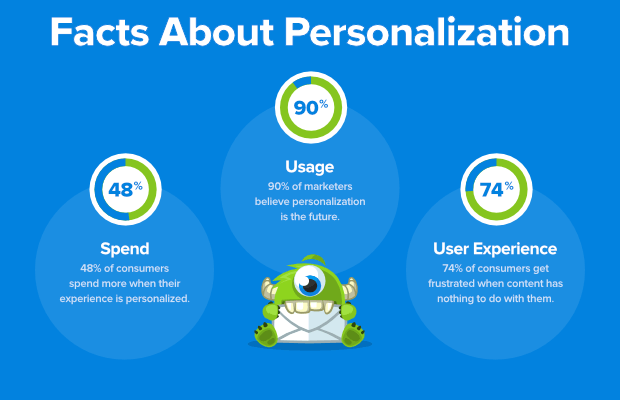
Source: OptinMonster
Personalization shows that your company has taken time to know your customers and you can reach them on an individual level, thus meeting their needs. When you send personalized messages to your prospects, they feel valued and this can encourage them to purchase from you.
Therefore, when you qualified your leads, you can send personalized messages to your prospects based on your knowledge of them.
A good example of personalization well done is from Amazon. Amazon makes it a point of duty to show recommendations based on the pages users visit. See an example below.

Source: Amazon.com
According to Business Insider, this type of personalization can increase sales by up to10%.
3. It increases sales efficiency
While lead quantity matters, quality leads produce the best results with fewer efforts. Having loads of both qualified and unqualified leads will lead to inefficiency. One process of lead qualification is lead scoring. It helps to weed out unqualified leads so you can focus on leads that will produce the desired results for your business.
This will help your sales team to avoid unproductive tasks that lead to nowhere. Scoring leads increases sales efficiency and ultimately, conversion rates, as the sales team will spend their time, efforts, and other resources on qualified leads that have shown interest in the company’s product or service.
4. It helps you to close more deals.
The thing is, 75% of generated leads never convert into sales. One aspect of the lead qualification process is lead nurturing. Marketo defined lead nurturing as the “process of developing and reinforcing relationships with buyers at every stage of the sales funnel.” It is important because 51% of marketers needed five or more touches in their lead nurturing campaigns. Nurturing leads helps you to build a lasting relationship with them and this, in turn, helps you to close more deals. This means you are nurturing leads that have interests in your product or service and can easily convert to customers with little to no effort.
Here is a video on lead nurturing
Therefore, companies that excel at lead nurturing have 9% more sales reps making quota and nurtured leads produce, on average a 20% increase in sales opportunities versus non-nurtured leads. The lead qualification process helps you to filter your leads according to their interest in your business. Thus, helping you to close more deals, and thus increase your income.
Here are 10 lead nurturing tactics from Alexa.
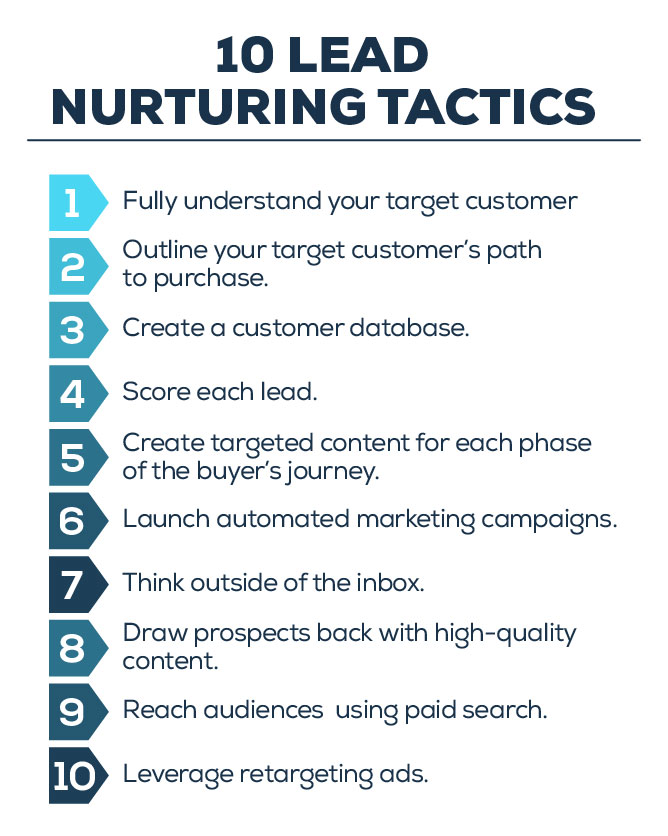
Now that you know the benefits of qualifying your leads, it is time to learn how the lead qualification process works.
Lead qualification process
1. Lead generation and classification
The lead generation and lead qualification process starts when you generate leads from website form submissions, social media campaigns (Facebook Lead Ads, Twitter ads, LinkedIn Lead Gen Forms, Google Lead Form Extensions, and Tiktok ads), email subscriptions, etc. As you generate leads, it is important that you contact them instantly to prevent them from growing cold. This is where you need integrations to help you connect the lead generation sources to where you can quickly nurture them. LeadsBridge provides integration services for popular CRMs. Check them out!
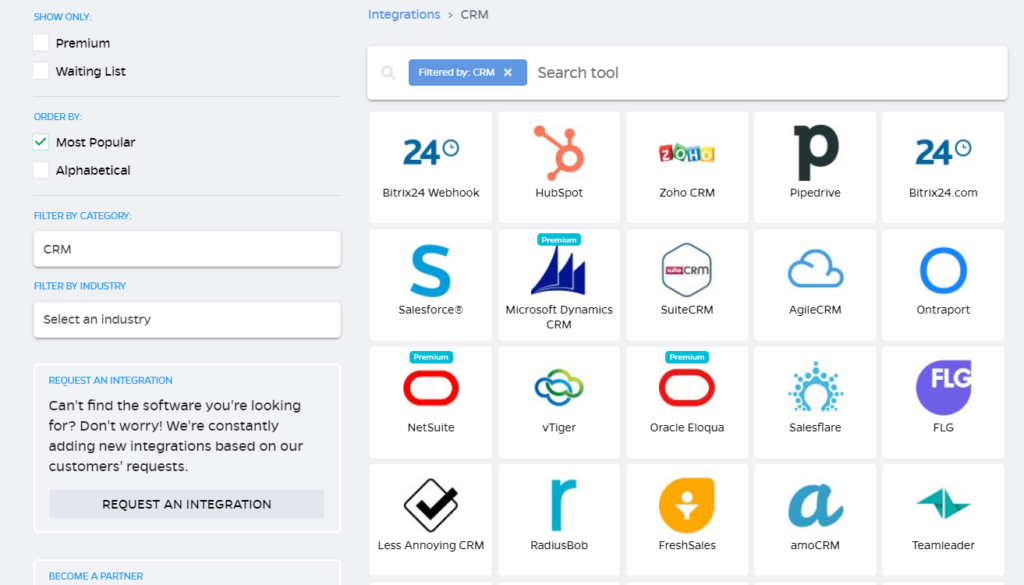
The leads that come in are categorized as shown below:
a. Unqualified leads:
These are leads that have not shown much interest in what you are offering. This may be because they have not yet made up their minds on the type of solution they need or they cannot afford your products or services. Unqualified leads, when properly nurtured, can turn into qualified leads.
b. Subscriber
A subscriber is a website visitor who signs up on your website or blog to receive more information from your business. They have shown interest by filling and submitting the form on your website and they are willing to build a relationship with you.
c. Marketing qualified leads
Marketing qualified leads are leads that have shown interest in your product or service. They are users who have downloaded your whitepapers, free e-books, and checklists. They are the leads that are set to receive marketing communication from you, such as email messages, texts, content, etc.
For a complete guide on marketing qualified leads, check out this blog post – The complete guide to marketing unqualified leads.
d. Sales qualified leads
Sales qualified leads (SQL) are leads who have been nurtured and passed to the sales team. The sales team then moves on to explore their interest in the product or service and the readiness to make a purchase. This type of lead has gotten to the last stage in the sales funnel. For example, a sales qualified lead can be someone that attends a webinar about your product or service and has watched videos of your products.
e. Product qualified leads
The product qualified leads to take it a step further by signing up for your free subscription or a free trial. This means they are ready to test run your product or service before they make the commitment to buying from you.
f. Customer
A customer is a lead who has gone through the sales funnel and has purchased your product or service.
Now that you have defined your leads, the next thing to do is to use the lead scoring model.
2. Use a lead scoring model
HubSpot defined lead scoring as “the process of assigning values, often in the form of numerical “points”, to each lead you generate for the business“. In other words, a lead scoring model helps you to know if a lead is qualified and the right time to reach out to them. It will give different numerical values to lead actions, such as viewing a specific page or opening an email. The lead scoring and lead nurturing process work together. Before you score leads, you must have nurtured them to a certain extent before you score them. Find an example of a lead scoring model below.
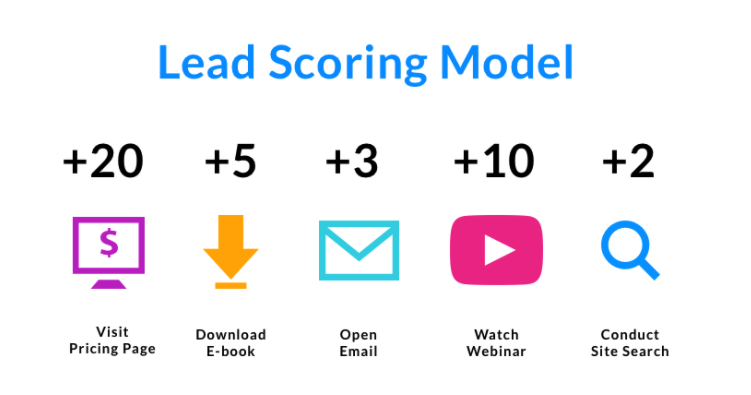
Source: Cyberclick
As seen from the image above, each action the lead carries out will be assigned some points. e.g.
- Download e-book +5 points
- Open email +3 points
- Watch webinar +10 points
- Conduct site search +2 points
- Visit pricing page +20 points
This implies that any lead that has 40 points is qualified. It also shows the stage of the leads in the sales funnel. The example below shows the score of the leads in relation to the stage they are in the sales funnel.
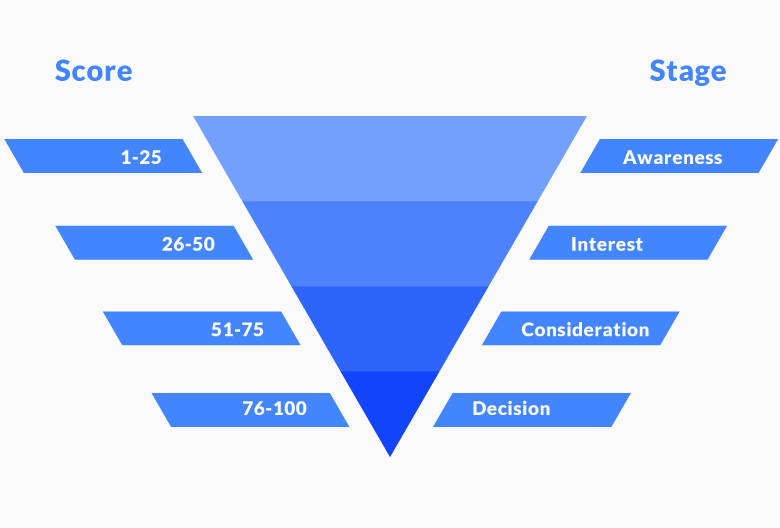
Source: Propellercrm
However, note that every company has a different lead scoring model and score numbering. But, the lead scores are usually based on a point from 0 to 100.
Other ways to score your leads include:
a. Using their demographic information
If your business is only selling to a particular demographic, you can ask demographic questions to help exclude leads that are outside your radar. For example, if you only sell to a certain age range, you can exclude anyone outside the range.
b. Company information
If you sell to a B2B organization, you can ask to know what industry a lead belongs to. This will help you weed out B2C industries that are not part of your audience.
c. Online behavior
Find out the behavior of your ideal customer on your website and compare it to other leads. For instance, your ideal lead can download your offer and visit certain pages before becoming a customer. This will give you the required actions a typical lead will take to become a customer. So, you can assign points to leads who followed that part in order to separate them from those who did not.
d. Email engagement
Use email engagement to measure how serious a lead is with your business. For instance, you can measure it using the open and click-through rates. If a lead opens your emails and clicks through to your website, you can assign a specific score to them. This will help the sales team to focus on those who are engaged rather than spending time on leads who will not convert.
f. Social engagement
Engagement on social networks is also a good way to score your leads. Find out the number of times your users click on your posts, share, like, or comment on your posts. Then award points to them accordingly.
g. Spam detection
It is normal to come across those who fill your landing pages with incorrect information. This is where you need to filter leads by their emails. Specify the type of emails you want, especially if you are selling to businesses. You can discourage people using Gmail or Yahoo email address from filling the forms. For example, on one of LeadsBridge’s landing pages (for the Online Ads Costs guide), the form requested a business email, instead of just any kind of email. This helps to weed out scams. See it below.
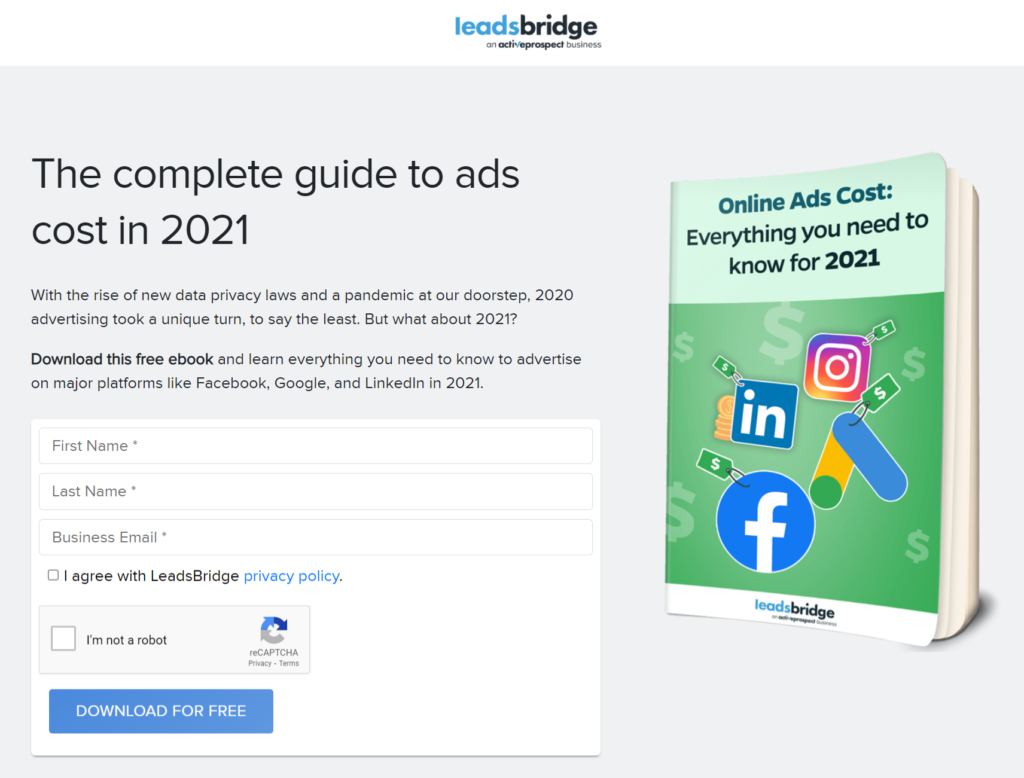
Here is a blog post that further explains how to score your leads – Lead Scoring Best Practices: How to Create an Effective Lead Scoring Strategy.
3. Use the right lead qualification framework
After scoring the leads, it is time to know if the prospect is really going to buy the product or not. This is carried out by asking the right questions. This is where the lead qualification framework comes in. According to HubSpot, “A qualification framework is essentially a rubric that salespeople can use to determine whether a prospect is likely to become a successful customer”
The framework is made up of five (5) different models you can use to score your leads based on your industry and the size of your leads. The questions in the framework will help you encourage leads to open up about their pain points. From there, you will know if your product or service is the right fit for them. Find the frameworks enumerated below.
a. BANT
BANT is an acronym for Budget, Authority, Need, and Timing. It is one of the oldest and the most popular of all frameworks. It is created by IBM. The BANT framework is great, but it is lacking the modern touch of the buying process. For example, it places the budget first without considering the needs of the prospects first. Because of this, it is becoming less popular now that businesses are prioritizing relationships with prospects first. However, it is suitable for businesses that sell expensive products or services.
Below are BANT questions you can use.

Pros of using BANTS
- BANT is a framework designed for different businesses can use. For example, it is suitable for both B2B and B2C companies. It has broad rules that can be applied to different leads.
- It is easy to use and implement
- It has a proven track record because it’s been around for a long time.
Cons of BANTS
- Businesses have been using the BANT framework for a long time. This means it can be outdated.
- It is a framework that focuses too much on the seller and not enough on prospects.
- The internet makes it easy for users to do research before purchasing a product. This means that a buyer already knows what they want before filling out a form and becoming a lead. The implication of this is that some questions of BANT might not be useful for the lead.
- It does not make provision for clients with an unknown need.
b. CHAMP
CHAMP is an acronym for Challenges, Authority, Money, and Prioritization. It is designed by InsightSquared. Unlike the BANTS framework, it put customer’s need first. This makes it suitable for the modern approach to the buying process. CHAMP places emphasis on Challenges. It starts with the challenges of prospect and making your product to serve as the solution. It identifies the authority using the structure of the company. It determines if the prospect can afford the product and lastly it shows where your product fits in the list of the prospect’s priorities.
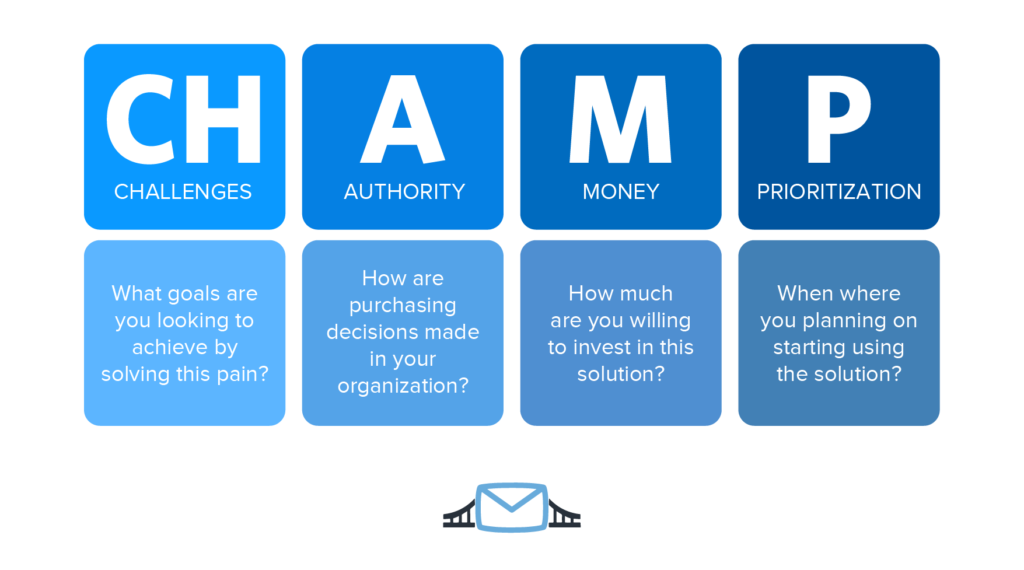
Pros of CHAMP
- The CHAMP framework makes it easy to qualify sales opportunities
- It takes care of your client’s needs
- It helps to qualify leads who don’t know what they want
Cons of CHAMP
- The CHAMP framework is not all-encompassing. It does not define how a prospect will measure the success of a project.
- It has a slow process
- It doesn’t determine the return on investment (ROI)
c. MEDDIC
MEDDIC is an acronym for Metrics, Economic Buyer, Decision criteria, Decision process, Pain point identification, and Champion. The MEDDIC framework was created by Dick Dunkel and Jack Napoli in the 1990s. It is specially designed for companies that deal with enterprise accounts, such as software enterprises. This is because the enterprise solution has a long sales cycle that involves back and forth discussions before the prospect makes a purchase. This is why it requires highly qualified leads that will likely make purchases. The MEDDIC framework identifies qualified leads using the Metrics, Economic Buyer, Decision Criteria, Decision Process, Identifying Pain and Champion.
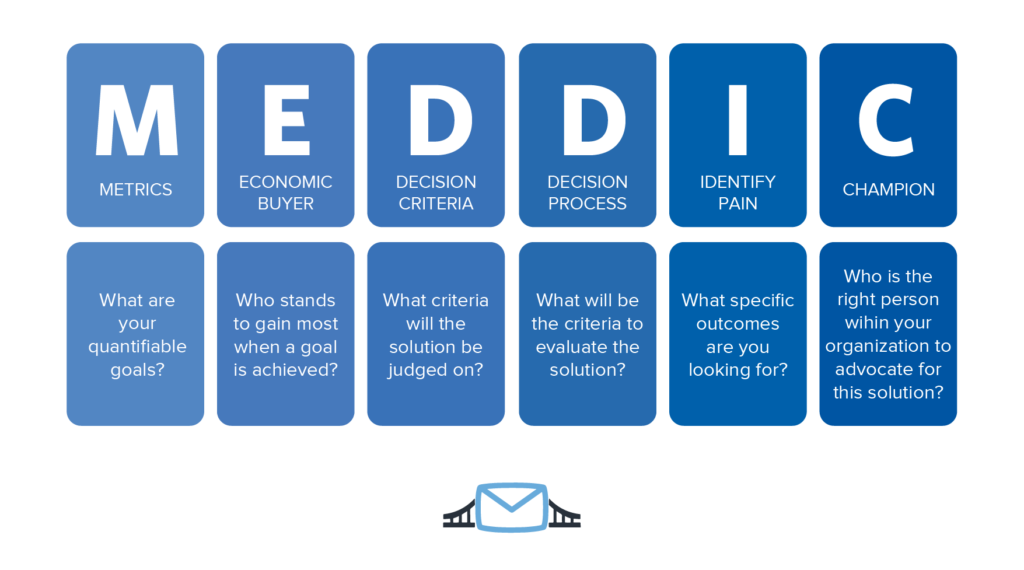
The pros of MEDDIC
- It helps you to know and qualify your prospects easily.
- Higher close rates and increased revenue.
- It is suitable for businesses that sell high-priced products.
The Cons of MEDDIC
- It is complicated.
- There is a need to know your buyer persona in and out, otherwise, you will not know what questions to ask in the MEDDIC process.
d. ANUM
ANUM means Authority, Need, Urgency, and Money. The ANUM framework seems to be the same thing as the BANTS framework. The difference is that instead of making the budget a priority as BANTS does, it places emphasis on the decision-makers in the company. Money is the last thing in the process. Most businesses prefer using ANUM over BANTS because they are talking with the decision-makers. They can build a lasting relationship with them over time.
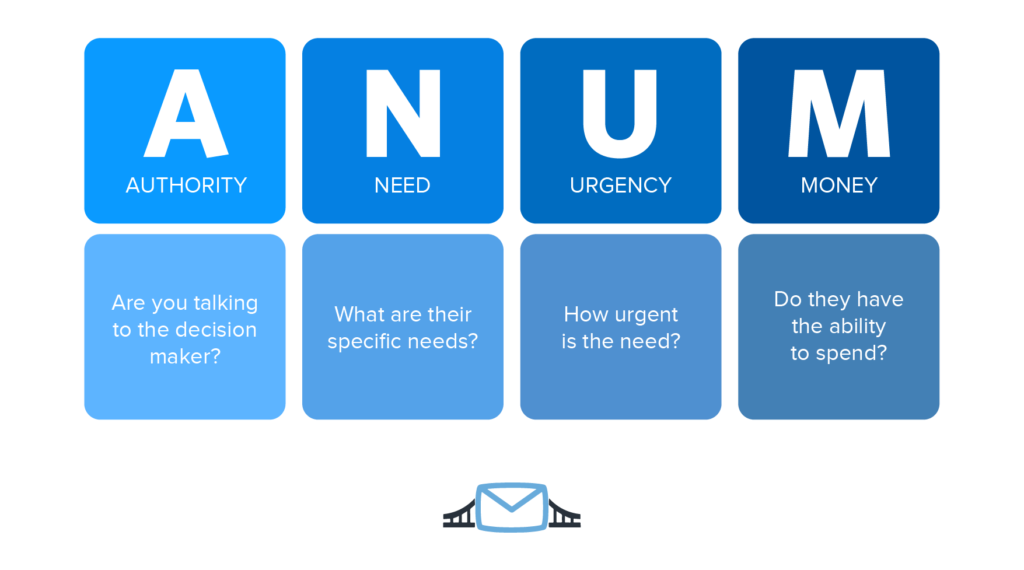
Pros of ANUM
- It generates faster returns because the leads are qualified.
- It is suitable for dwindling budgets.
- It is suitable for prioritizing the needs of your clients.
Cons of ANUM
- It is not suitable for leads who don’t understand your product or services.
- It doesn’t really help in qualifying leads that have not made up their minds about purchasing your products or service.
e. FAINT
FAINT means Funds, Authority, Interest, Need, and Timing. The FAINT framework shows that many people do not plan to make purchase decisions and thus associating budget with the framework is not necessary. It rather places emphasis on building the interest and desire of the decision-maker. This way, you can show them how your product can help solve their problem, without mentioning the price. When they are finally convinced that they need the product, you can reveal the price to them.
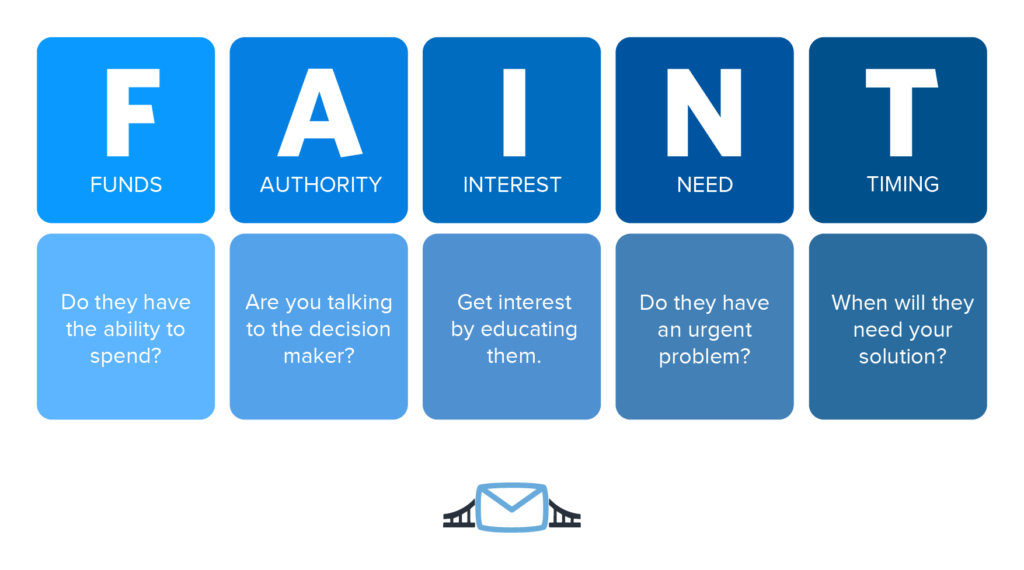
Pros of FAINT
- It is useful for leads who are not aware of their needs.
- It helps to create a customized sales pitch.
- It is a framework that helps to solve the lead’s pain points.
Cons of FAINT
- It is not suitable for leads who know what they want.
- It takes time to prepare a sales pitch, which may not even help to convert leads to sales.
4. Get to the lead nurturing process
Now that you have used the lead qualification framework to qualify your prospects, it is time to nurture the leads that pass the filters. Lead nurturing is the process of building relationships with the leads through content, such as email and text messages, to help educate them more about your product/service so they can make up their minds to become customers.
Lead nurturing is important because nurtured leads produce, on average, a 20% increase in sales opportunities versus non-nurtured leads. This is why you need to create a robust, lead nurturing strategy.
Here is a post to help you do that easily – the importance of lead nurturing in your marketing strategy.
5. Transfer sales qualified leads to the sales team
As you nurture your leads, you will know the ones that are sales qualified. This is the right time to hand them over to the sales team for further nurturing. Here, you need a CRM to make the process simpler for you. A good automation CRM will help you follow up with leads and assign them to the right sales rep that will help to convert them to customers. You will learn more about this in the latter part of this guide.
6. Move qualified leads through the sales pipeline
It is now time for you to move all qualified leads through the sales pipeline. Now that you’ve done all the necessary things to qualify them, it will be easier for you to move them to where they can convert.
What to do with disqualified leads
We have outlined how to move qualified leads through the sales funnel, but what do you do with unqualified or disqualified leads. Disqualified leads are leads that are not your ideal customer. They may not fit your buyer persona. It is not all about the quantity of leads, but the quality. Otherwise, you will waste your time and money trying to qualify leads that will never convert.
For unqualified leads, you could nurture them more. They may need more content to help provoke them to take action. You don’t have to force them to buy. Instead, give them all the help they need. Never delete unqualified leads from your database because they can change to become qualified leads. Call them at intervals if need be. Let them know if you are running a campaign or whenever you have a change in your pricing. This way, you are constantly putting your brand before them. It could help them buy from you whenever they are ready.
Automated lead qualification
Qualifying a lead through marketing automation entails using CRM software to automate all the marketing, lead generation, and lead qualification tasks. This involves collecting leads from website forms and marketing campaigns, automating follow up, qualifying the prospects, assigning them to the right sales rep that will help close them.
Automated lead qualification helps to increase the sales team efficiency. With it, you can filter the leads at the top of the funnel, where you can decide which leads fit in and which do not through the lead qualification framework. With the automated lead qualification, you don’t use much energy or many resources.
Below are some lead qualification CRMs you can use for your business.
5 Best lead qualification CRMs for your business
1. Freshsales
Qualifying leads in Freshsales starts from the moment you capture your leads. It doesn’t matter where your leads are coming from, you can integrate them in such a way that you connect the source such as Facebook Lead Ads and Autoresponders such as MailChimp and ActiveCampaign to your lead qualification CRM like Freshsales. This will help to funnel your leads straight to Freshsales where you can qualify them appropriately. One good thing is that LeadsBridge offers such integration right here.
Pics of integration
1. Freshsales integrations with MailChimp
2. Facebook Lead Ads integration with Freshsales
3. Freshsales integrations with ActiveCampaign
The integration step is very important because 82% of the buyers expect you to respond to them immediately. It prevents leads from getting cold before you reach out to them. It also saves you the time to manually copy your leads from your autoresponder or ad campaign platform to your CRM.
Lead scoring is the next step in the CRM lead qualification process on Freshsales. This CRM helps you segment your leads into cold, warm, and hot leads. With this, you are able to automatically nurture cold and warm leads and move hot leads quickly through the sales pipeline.
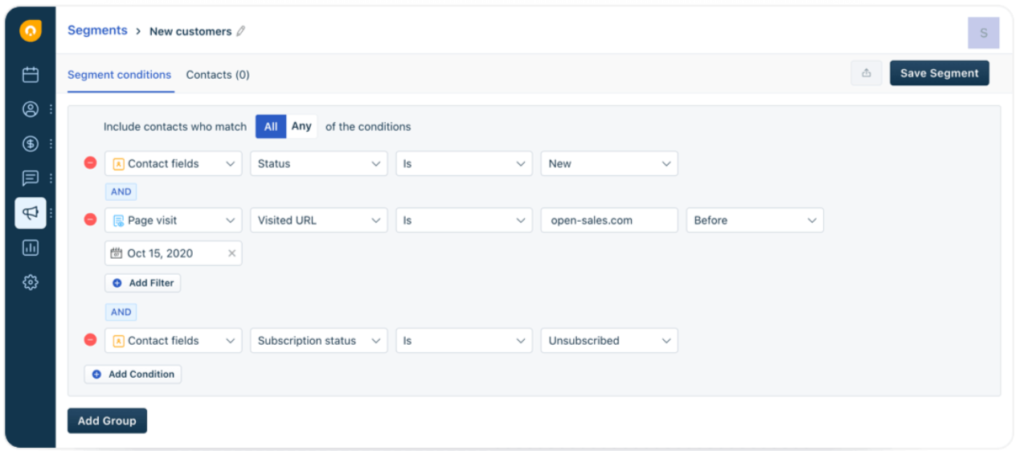
It shows you the most engaged leads with the highest/lowest lead score, so you will know which leads are worth pursuing.
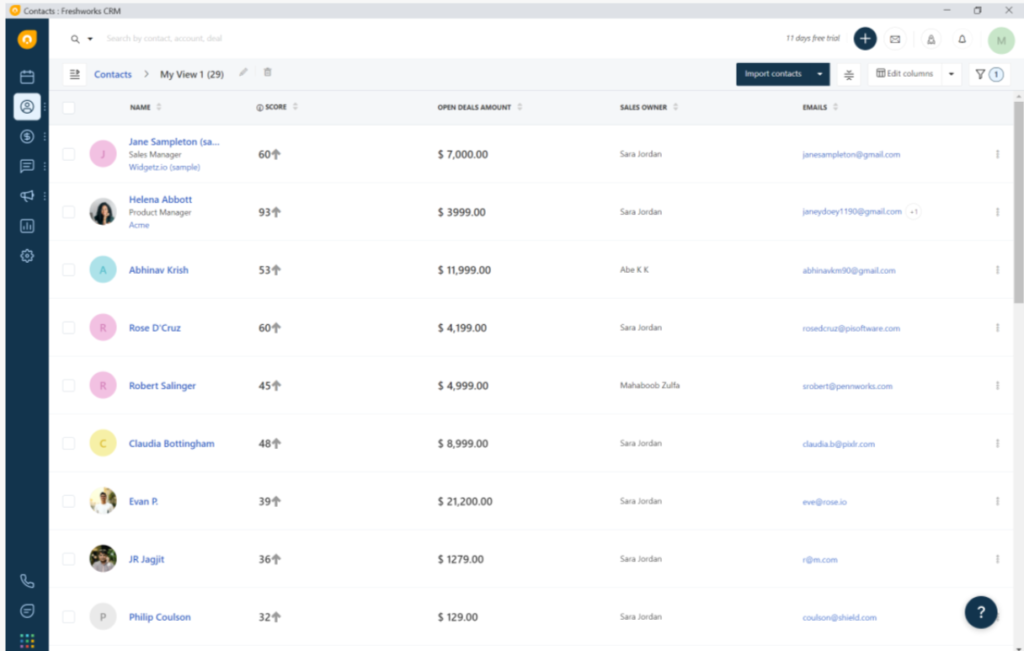
With Freshsales you can automate follow-ups to both cold, warm and hot leads so you can constantly engage with qualified leads.
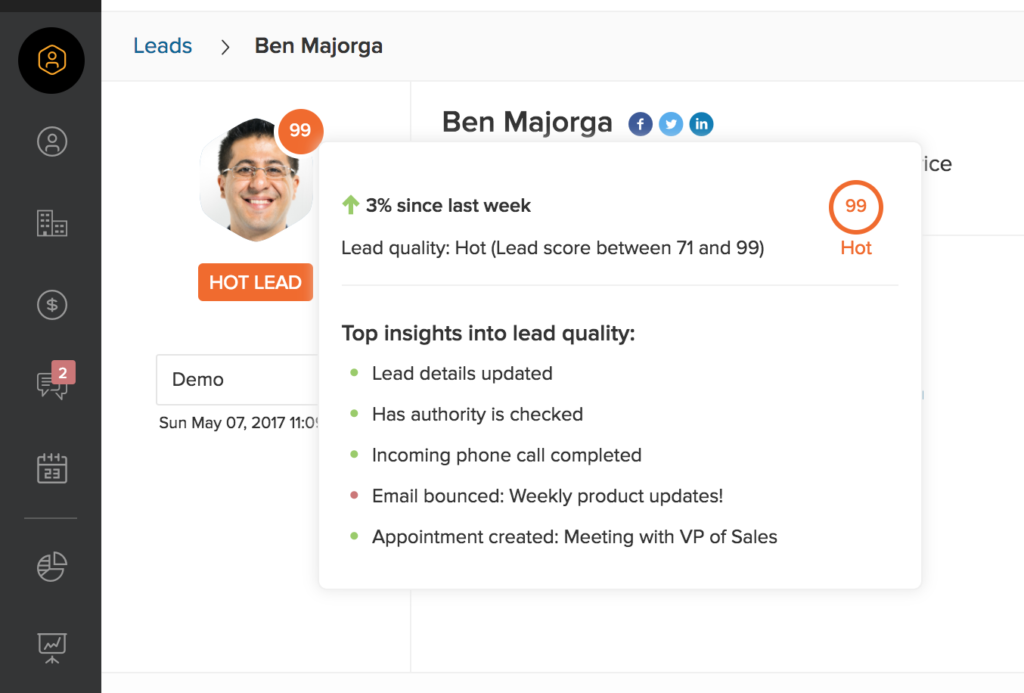
You can also segment leads according to their quality.
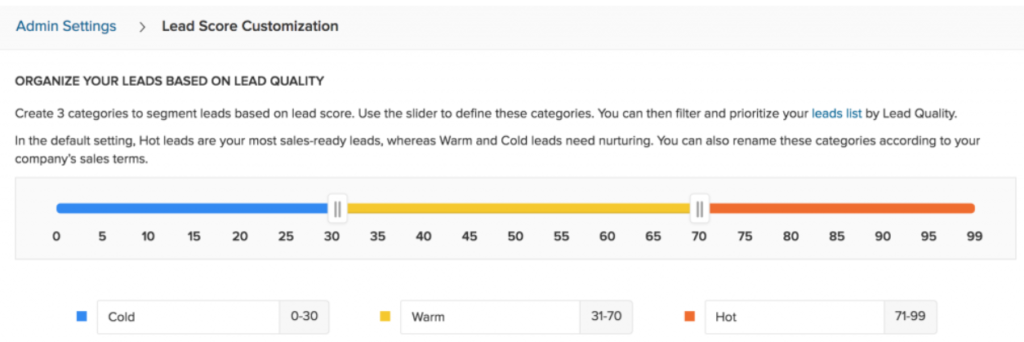
2. HubSpot
HubSpot CRM helps you to automate your marketing activities from inception. This includes collecting leads from different sources. By integrating HubSpot with your lead generation sources and autoresponders, you are able to quickly reach out to the leads to qualify and nurture them into paying customers. LeadsBridge offers such integration. Examples include:
1. Integration between Facebook Lead Ads and HubSpot
2. Integration between HubSpot and MailChimp
3. Integration between LinkedIn Lead Gen Forms and HubSpot
When the leads enter the HubSpot CRM, the sales reps are notified. HubSpot displays the interaction of the leads with the company, as shown below.
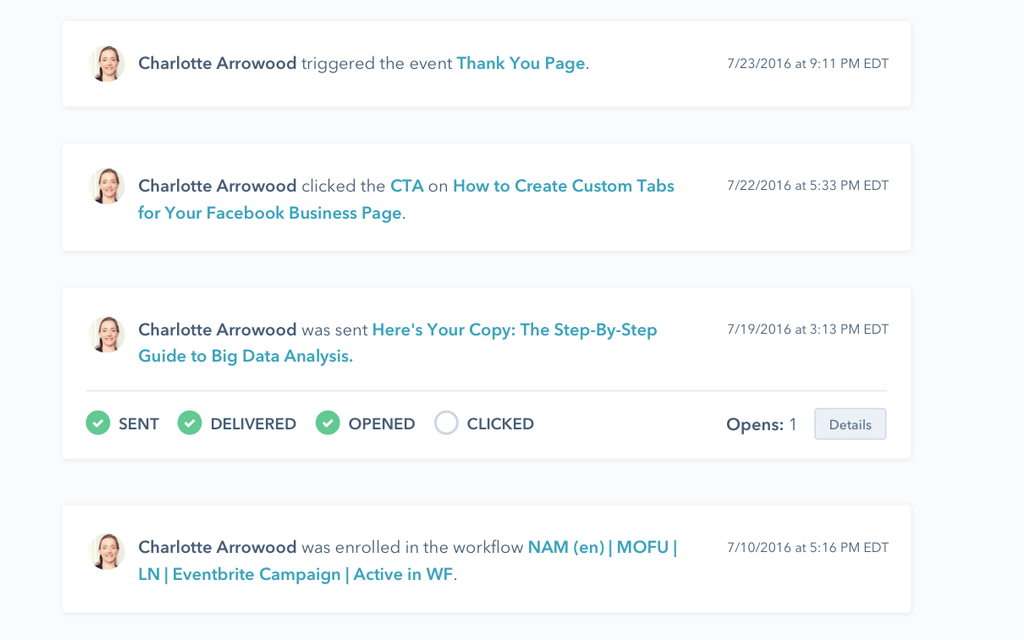
Also, HubSpot has a robust lead scoring system that allows you to properly score your leads according to the defined criteria. The criteria are segmented into two parts – Positive attributes and negative attributes, as shown below.

Then you can add your lead score to it.
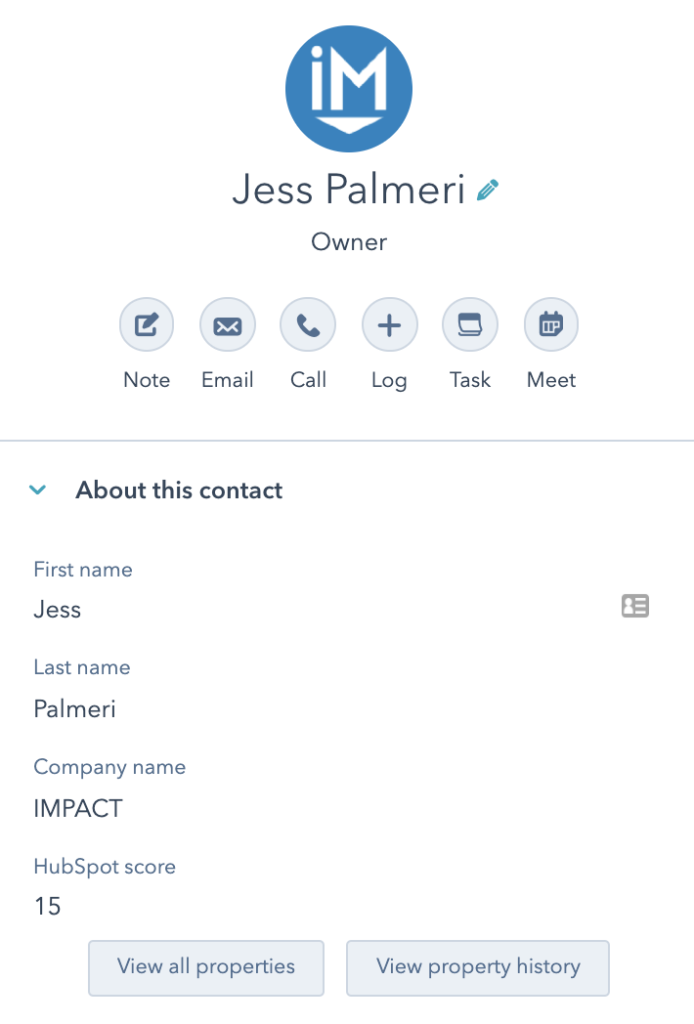
3. Salesforce®
Salesforce® is a complete lead management tool that allows you to capture leads, score and prioritize them, assign leads to sales reps, convert qualified leads, nurture unqualified leads and evaluate your lead management progress, as shown below.
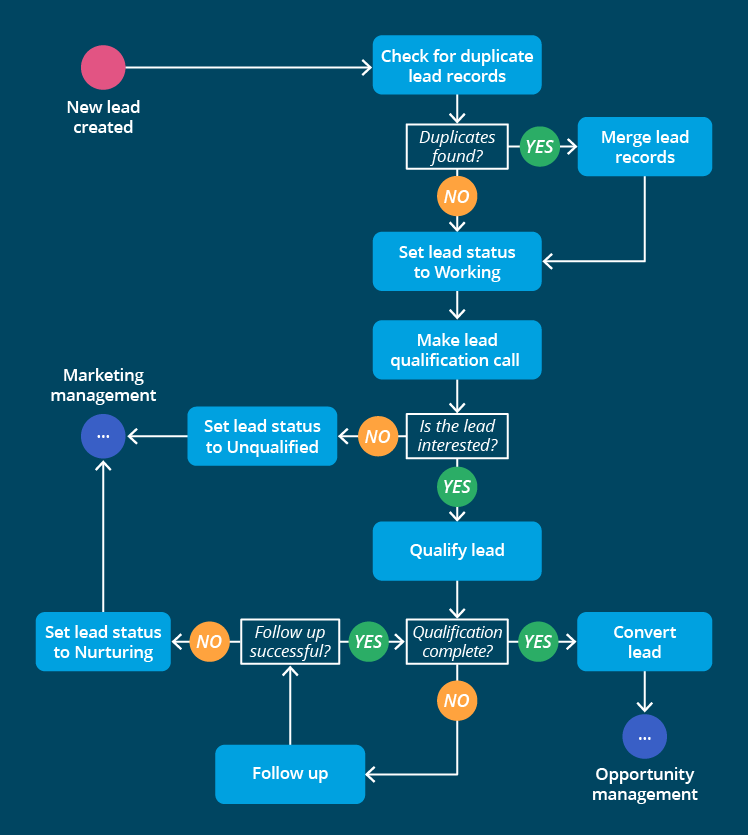
Source: Scnsoft
If you use other lead generation sources such as Facebook Lead Ads, and LinkedIn Lead Gen Forms, you can seamlessly integrate them with Salesforce® so you can funnel your leads directly to it. LeadsBridge offers such integration and below are some examples:
1. Facebook Lead Ads integration with Salesforce®
2. MailChimp integration with Salesforce®
3. LinkedIn Lead Ad forms integration with Salesforce®
Also, you can add leads from your autoresponders, such as Mailchimp, and ActiveCampaign to Salesforce®. This means once your leads get to Salesforce®, you can start qualifying your leads.
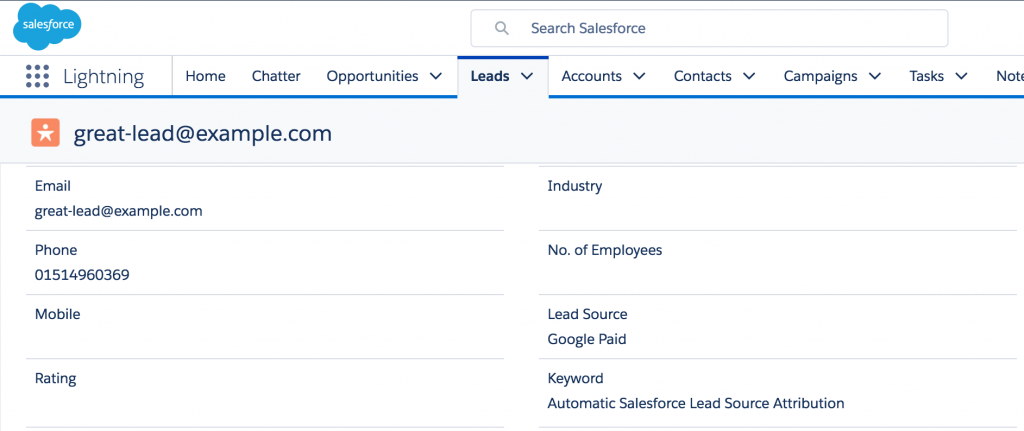
Source: Ruleranalytics
Once your lead enters the Salesforce® system, it checks for duplicates records. If there are, it merges the records together. If not, the leads enter the “working” lead status.
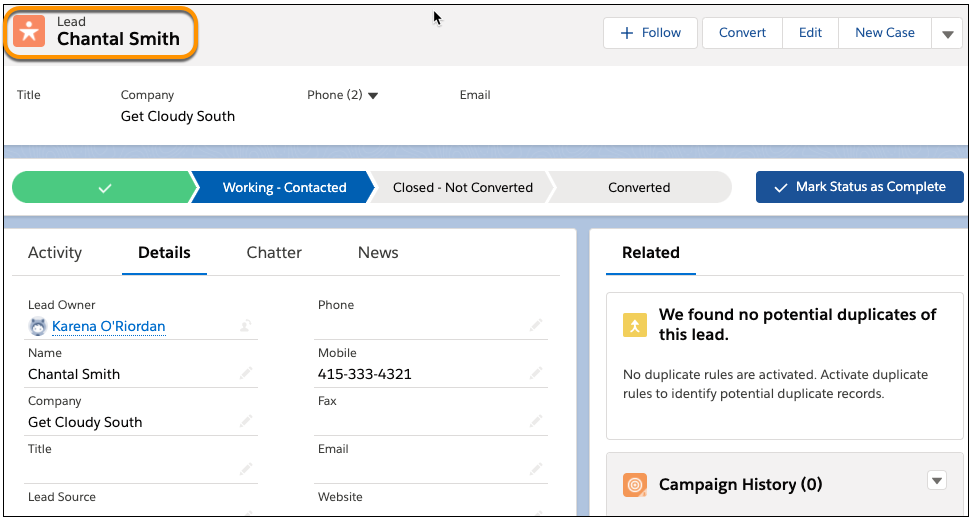
Source: Salesforce®
From there, you can qualify your leads using different methods, such as the Einstein lead scoring method.
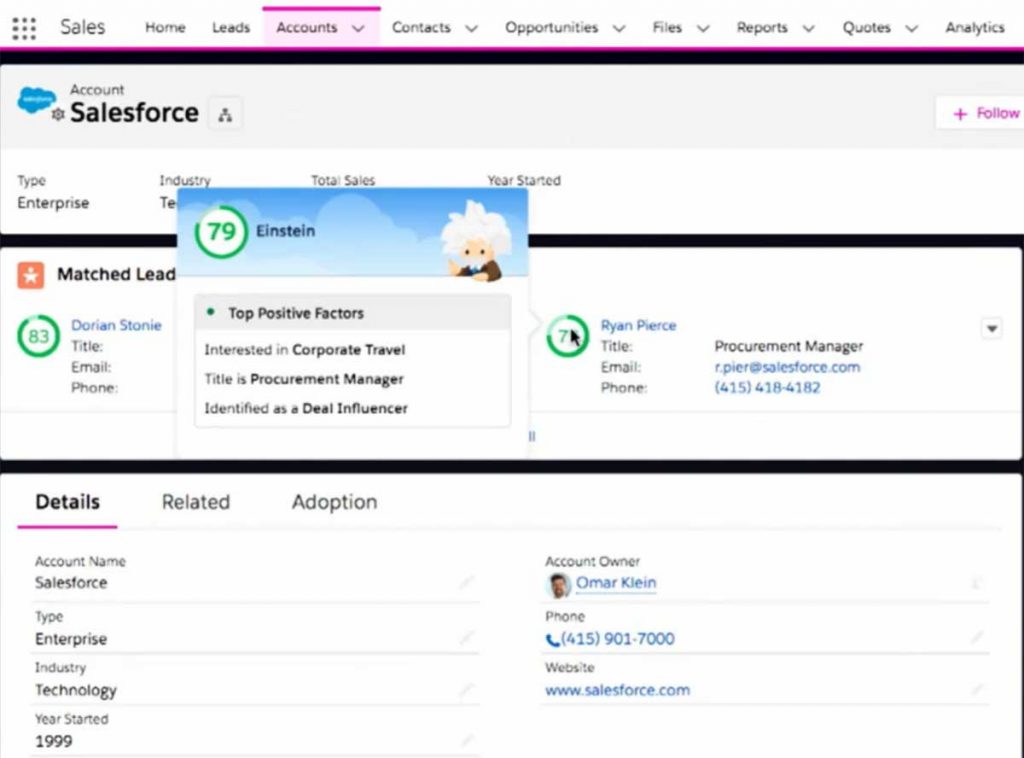
Source: Fionta
If the lead is interested in your product or service, it becomes a qualified lead. If not, it becomes an unqualified lead and is sent to lead nurturing.
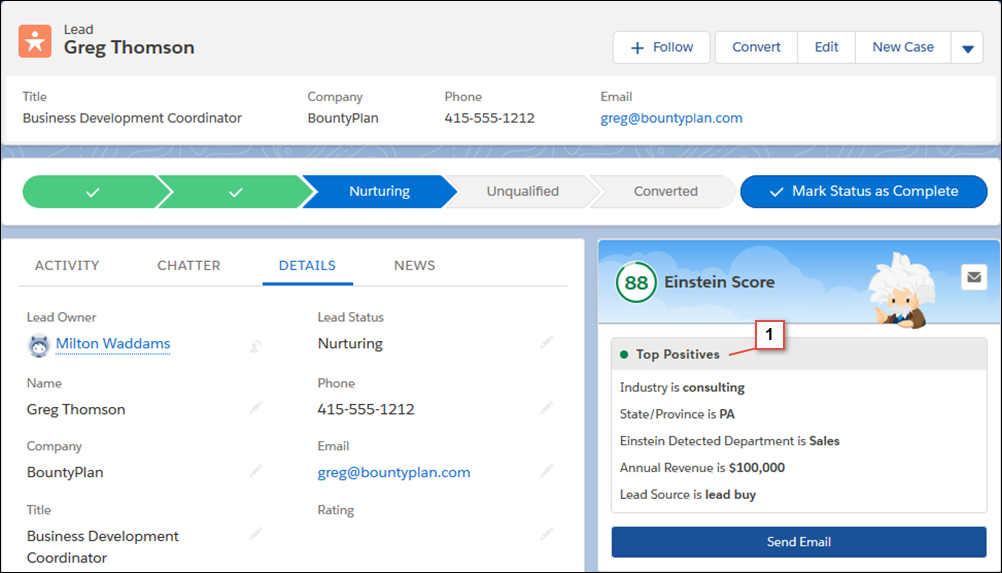
Source: Salesforce®ben
Qualified leads are passed through the process of converting them to leads and sales. Unqualified leads are sent more follow-up messages.
4. Zoho CRM
Zoho CRM is one of the most popular lead qualification tools online. It helps you to identify the right leads, guide them through the sales pipeline and nurture them until they become customers. Qualifying your leads in Zoho CRM starts by adding your lead sources to the platform. To make it easier for you, you will need to start automation right from when leads come into your marketing campaigns, website, social media platform, etc.
LeadsBridge provides the best tool for integrating your lead sources with Zoho CRM. This helps to eradicate the process of manually feeding your leads to Zoho, thereby making errors and wasting time.
With LeadsBridge’s integration platform, you can connect several tools you use to Zoho CRM. This includes lead sources like Facebook Lead Ads, LinkedIn Lead Gen Forms, Google Ads, and Google Lead Form Ads. You can also add leads from your autoresponders, such as MailChimp, ActiveCampaign, and GetResponse.
Click on the integrations below to see how they work.
a. Facebook Lead Ads integration with Zoho
b. Salesforce integration with Zoho
c. MailChimp integration with Zoho
Now that your leads are funneled into Zoho CRM, the next step is to decide on your ideal customer. Check the incoming leads with your buyer persona. This way, you can omit the leads that do not fit your ideal buyer and move the right leads through the funnel. Thereafter, you can score your leads using numbers or use the lead qualification framework described above.
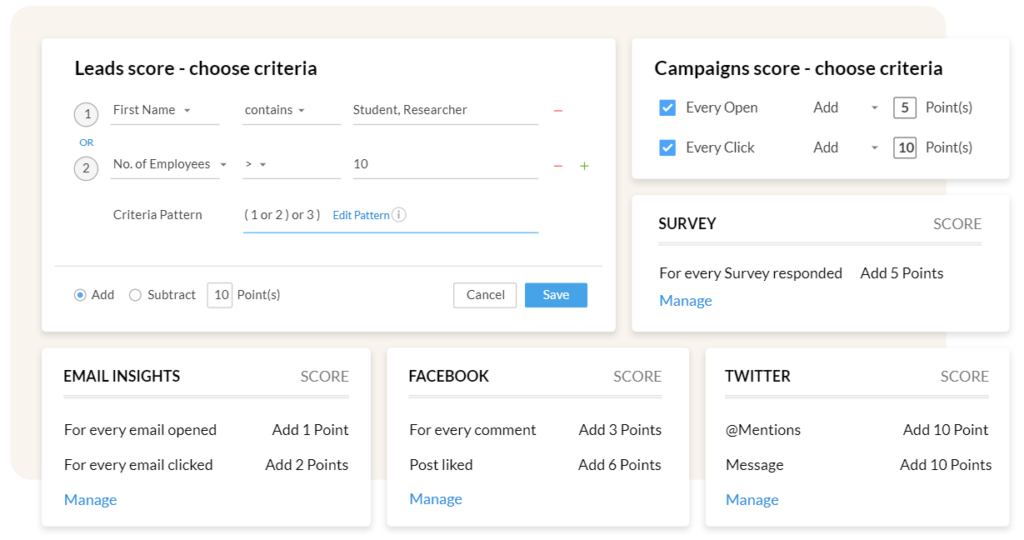
Source: Zoho CRM
It is now time to nurture qualified leads with the right content as you move them through the sales funnel. At this stage, you can still disqualify leads that are not responding as they should, so you can focus on ready leads. Now, assign qualified leads to your sales reps. The sales reps will further nurture the leads to educate them more about your product or service.
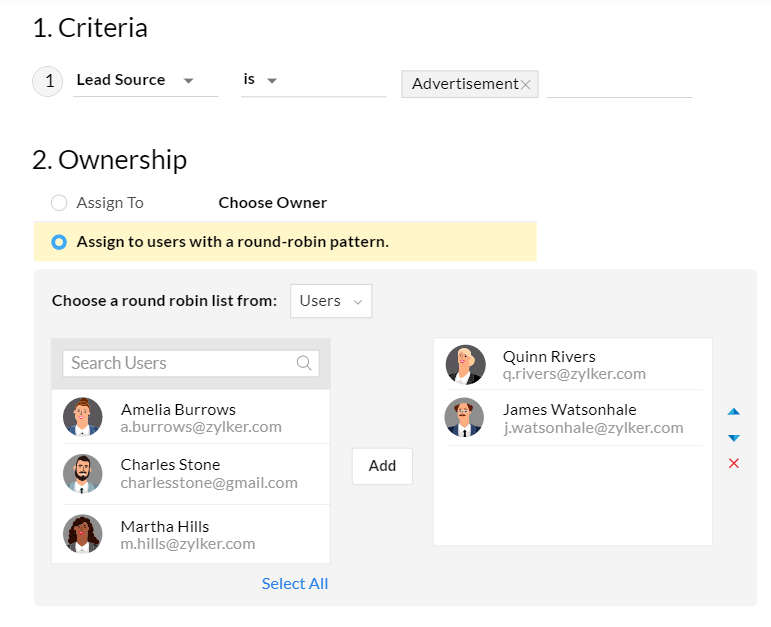
Source: Zoho CRM
The last step in the CRM lead qualification process on Zoho is to convert leads to sales.
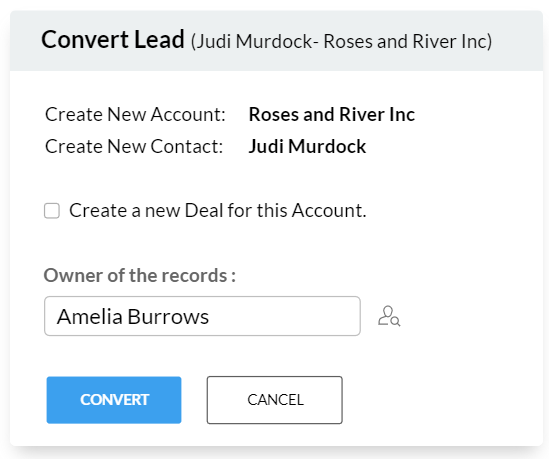
Source: Zoho CRM
5. Agile CRM
Agile CRM, like other tools mentioned above, allows you to bring in leads from your lead sources such as ad campaigns and autoresponders. In order to get this done correctly and avoid errors and manual work, you need to integrate your lead generation sources with Agile. LeadsBridge provides these integrations. Below are some of them:
1. LinkedIn Lead Gen Forms integration with Agile CRM
2. MailChimp integration with Agile CRM
3. Facebook Lead Ads integration with Agile CRM
After you send your leads to Agile CRM, it is time to move them through the sales pipeline. This involves scoring the leads at different stages. The lead scoring system is automated and works in the background. It shows you when your leads are qualified so you can send them to a sales rep where they can quickly follow them up before they get cold.
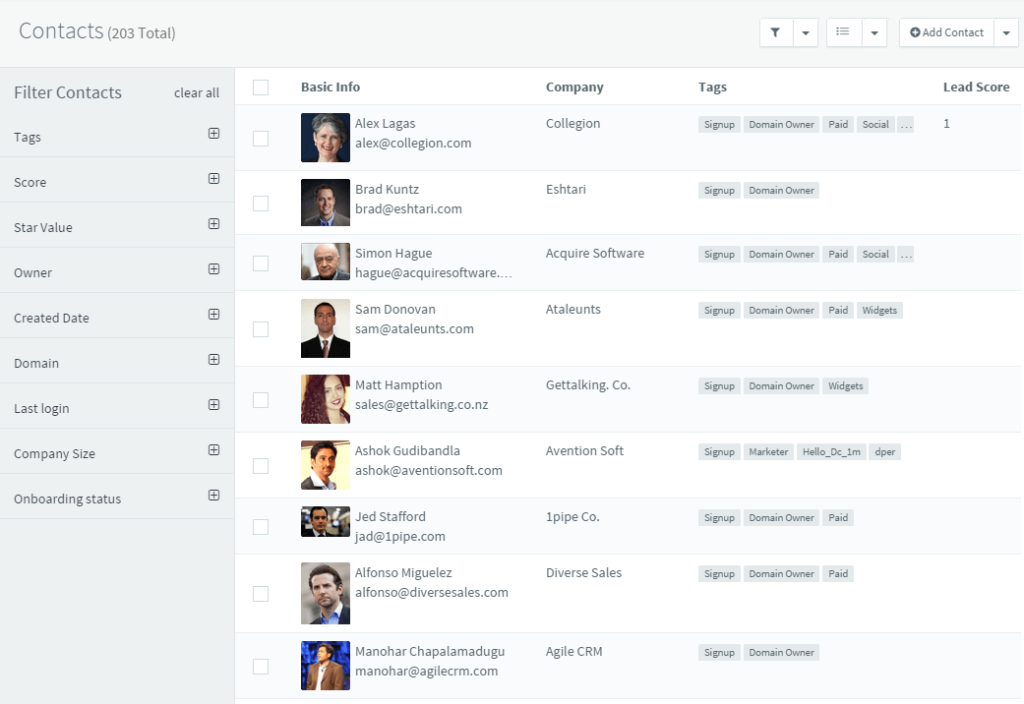
Source: Agile CRM
Agile CRM allows you to manage your leads as you move them through the funnel. It has a robust lead nurturing feature to help you educate your leads through email marketing until they are ready to convert and then hand off to your sales reps.
6. Salesmanago
Salesmanago is a lead management software that allows you to generate leads, integrate with lead sources through Leadsbridge, and qualify your leads. You can integrate different lead sources such as Facebook Lead Ads, LinkedIn Lead Gen Form, Google Ads (on the waiting list), and Google Ads Lead Form Extensions. It also allows you to integrate your autoresponders with the platform through LeadsBridge. These include MailChimp, ActiveCampaign, and GetResponse below are some examples:
1. GetResponse integration with SalesManago
2. Facebook Leads Ads integration with SalesManago
3. LinkedIn Lead Gen Forms integration with Salesmanago integration
The next step is the lead nurturing stage. This is the stage where you send out lead nurturing messages through email marketing campaigns. From there, you can start scoring the leads based on defined rules.

Source: Salesmanago
Leads that pass the lead scoring stage are transferred to the sales reps for further nurturing.
Qualified leads are nurtured to become customers, and customers are sent cross-selling and up-selling programs.
5 Best Lead qualification strategies for better conversions
1. Create the ideal buyer persona for your business
The most important aspect of qualifying your leads is to know your ideal buyer persona. A buyer persona represents your target customer, their interest, and behavior as they interact with your business. The ingredients that make up the buyer persona are their demographics, pain points, values, research habits, priorities, identifying factors, and psychographic characteristics, as shown below.
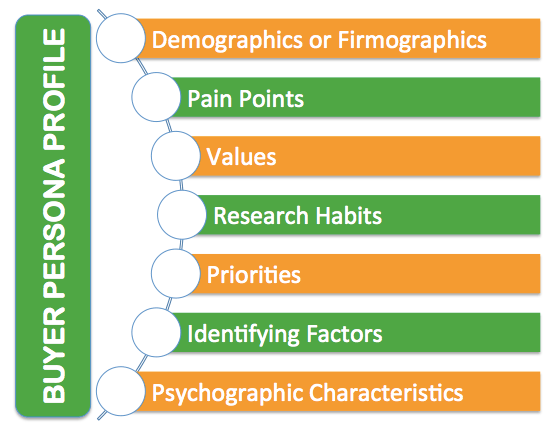
Source: Business2Community
An ideal buyer persona profile will help you attract qualified traffic to your website and you will remove unqualified leads as they come in.
You need to ask questions that will help you create a complete buyer persona before you qualify your leads.
To create the ideal buyer persona profile, you first need to analyze your website by using Google analytics. It shows you the most popular topics and pages that people visit the most on your website. You can dig further by going to the demographic, interests, and the Geo sections of Google analytics. There you will find the age and gender of your audience, their location and language, and their interests.
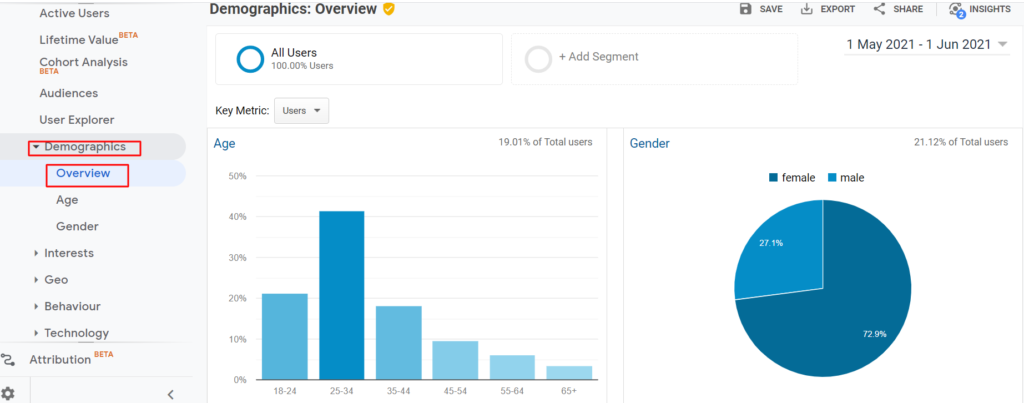
Other places you can find information about your ideal buyer persona are on social media, and on Google trends. You can also use questionnaires and interviews for your current audience to gather more useful information from them.
Below is a good example of a buyer persona profile.

Source: Elenadefrancisco
Above is an example of a B2B buyer’s personal profile. It shows a brief description of the ideal customer.
2. Ask the right lead qualification questions
Once you know who your ideal buyer is, you need to create questions that will help you filter the leads before you send them to your sales team. To do this, start by asking basic questions such as what is your name, email address, business name, and industry. The lead qualification framework mentioned above contains different questions you can ask your audience.
For example, BANT asks the following questions:
Budget: Do they have the ability to spend?
Authority: Do we know who the decision-maker is?
Need: Does the prospect have an urgent business problem and pain to address?
Timeline: Do we know a timeframe in which they need a solution?
There are about five lead qualification frameworks as discussed above. There are factors that influence the type of framework you use for your business. This includes the type of business you are in, the type of customers you serve, and your ideal target audience.
For example, MEDDIC is suitable for fast-growing startups and large corporations, such as RSA, EMC, and BMC.
Below are more questions you can ask your prospects.
- What are you looking for in a vendor?
- When do you intend to sign up with a new vendor?
- What is your topmost priority now?
- How can we help you make a buying decision?
- What solutions have you tried in the past?
- Based on your experience, do you think our product can be a solution to your problem?
- What other solutions are you considering?
- Do you have a budget in place for this product?
- Who is in charge of budget sign-off?
10. Who else makes up the purchasing process in your company?
3. Use a lead qualification CRM
A survey report revealed that marketing automation generates 10% (or greater) increase in revenue within 6-9 months. With a lead qualification CRM, you can automate the process and set it on autopilot. Lead qualification CRMs help you to collect your leads, score them and qualify them for you as they go through the funnel. You can generate reports of all your lead data for decision-making.
Most of the CRMs are all in one, allowing you to generate leads and also qualify them. Here, you will need to integrate your tools with your CRMs to make it easy to funnel leads to your lead qualification software. Once the leads are there, the qualification systems start automatically. This helps you to avoid errors, manage your time effectively and increase your revenue.
4. Map out the lead qualification process
Most B2B businesses have complex sales transactions. Therefore, mapping out the process of qualifying leads from the onset will help to streamline the process. A survey carried out by Entrepreneur revealed that 65% of all companies admit they have no process to nurture leads. Another research revealed that about 50% of sales time is wasted on ‘unproductive prospecting.
The buyer’s journey is no more linear. It comprises twists and turns. In the past, a prospect will do research to gather information about the product or service they want to buy, chat with the sales rep, narrow down their choices and make buying decisions. Today, 70% of the buying decision is complete before a buyer reaches out to the sales team.
This is why you need to map out an effective process for qualifying your leads.
5. Use data enrichment to prequalify leads
Data enrichment is a type of data integration that fills in missing details to give a complete picture of a prospect or customer. This helps you to collect valuable data, improve data accuracy, and save time. The data helps you to know the ideal customer without asking too many questions. With it, you can quickly and easily fill in the blanks in their profiles and remove unqualified leads straight away. To enrich your data, follow the steps below:
a. Know the information you need to get from your leads.
For example, if you need to know the size of the company in order to pitch them the right product plan, collect the information from the leads.
b. Know the quality of information you have.
Ensure that leads information in your CRM is free from errors. This is where you need a good platform that helps to manage customer and marketing data. LeadsBridge helps businesses with data management for customers through CRM Integrations. Do check it out!
c. Know the sources of data you need for your data.
For instance, if you are dealing with companies, it is good you use LinkedIn as your lead generation source.
d. Segment your customers so you can produce personalized content for them.
Lead qualification checklist
1. Use quality lead generation sources to generate leads for your business.
One of the best ways to generate leads is using the Facebook Lead Ads, LinkedIn Lead Gen Forms, Google Lead Form Extensions. This is because they are specifically focused on lead generation.
2. Connect your lead generation source to your lead qualification CRM or Autoresponder.
This is to help you funnel your leads directly from the source to the CRM or autoresponder. With this, you don’t have to manually download your leads from the source and upload them to the CRM. It saves time and prevents errors. Check out how LeadsBridge‘s integrations work!
3. Nurture the leads appropriately
Send relevant messages to the leads as they come in. Most CRMs have automated email sending features. This will help you to quickly get in touch with the leads as they come in and before they get cold.
4. Use the right lead qualification method
If you use a lead qualification CRM, you may not need to bother with this, because the software has lead scoring methods you can use to qualify your leads as they move along the sales funnel.
5. Separate qualified and unqualified leads
Nurture qualified leads to become customers and send converted leads to cross-selling and up-selling programs. Unqualified leads are not totally useless. They may require more nurturing, so send more content to them until they are ready to make a purchasing decision.
Conclusion
The success of your business depends on your ability to search for the right leads, qualify and convert them to customers. But this is easier said than done. You need the right tools that will help you generate quality leads and send them to the software that will help to nurture, qualify and assist you to turn them to paying customers.
The lead qualification process helps you to focus on the right leads that are interested in your product or service. This saves time and resources you would have to spend on unqualified leads. Qualifying your leads helps you to generate more revenue, and it produces happier customers that can also refer other people to your business.
Now you know what lead qualification is all about and how to qualify leads, it is time for you to take action. Ensure you connect your lead generation sources to your CRM or autoresponder to help simplify the process. This will help you to maximize sales and marketing efforts. Discover our CRM integrations here.




